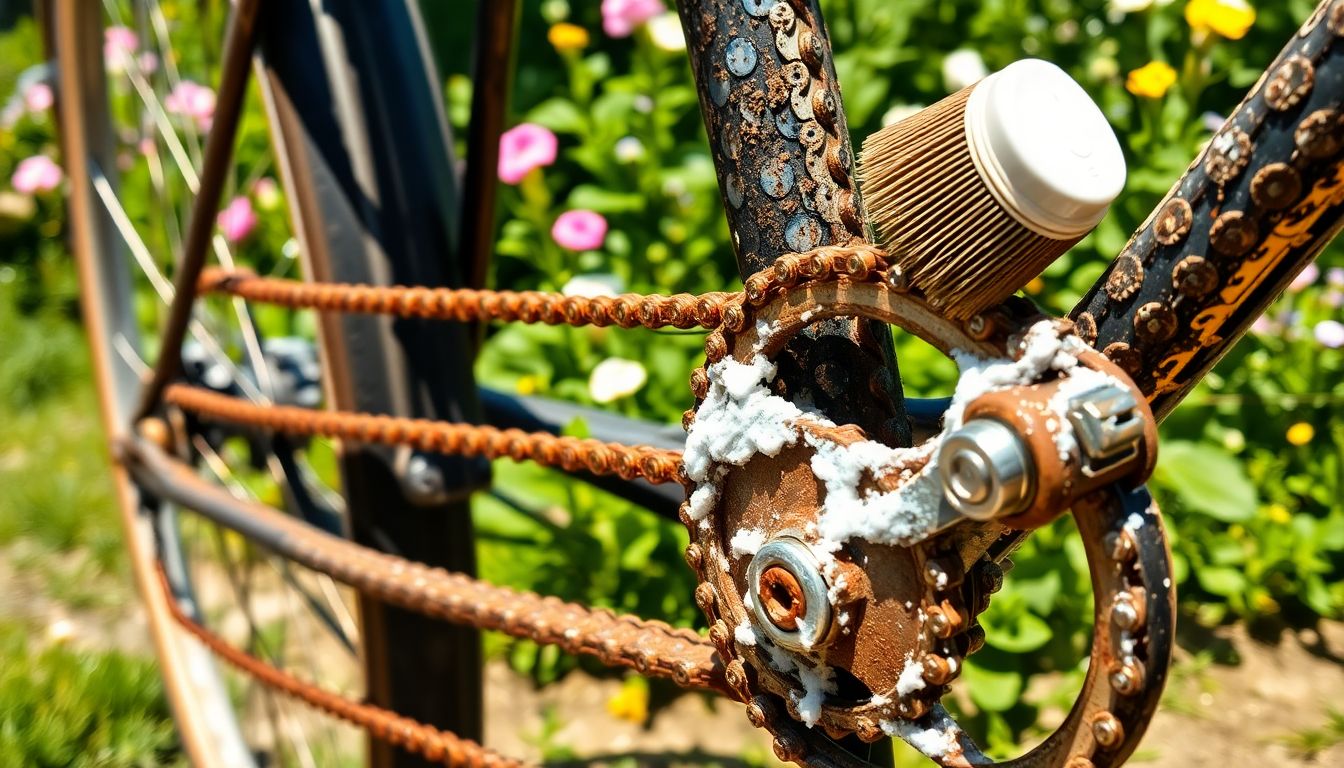It’s time to pull your bike out of the closet—but oh no, after a few months in storage, it’s covered in rust. Sound familiar?
Rust isn’t just ugly—it can affect your bike’s performance and significantly lower its value when you sell it. The good news? Rust is removable. With some elbow grease and the right technique, you can get your bike back on the road to its previous performance.
Here’s how:
From DIY home treatments to over-the-counter products, here’s everything you need to know about removing rust from your bike—and preventing it from coming back.
Easy Methods for Removing Rust from Your Bike
1. The Baking Soda Approach
Why it works: Rust is quietly eliminated by baking soda without injuring your bike’s metal components, making it a risk-free method to apply regularly.
How to do it:
- Mix baking soda with water until it forms a thick paste.
- Apply the paste to the rusted areas.
- Let it sit for 10–15 minutes.
- Scrub the area with a sponge or brush. If the rust remains, repeat the process.
- Dry your bike thoroughly once finished—leaving it damp can cause rust to return.
2. The Vinegar or Cola Method
How to use it:
- Pour vinegar or cola into a spray bottle and apply it directly to the rusted areas.
- Wrap a brush or sponge in tinfoil (to avoid surface damage) and scrub harshly.
- Rinse the solution off well—leaving the solution on too long can cause corrosion.
- Add baking soda for extra cleaning power if required.
3. Chemical Rust Removers
As a last resort, chemical rust removers are a powerful choice.
Safety advice to bear in mind:
- Always wear gloves and protective eyewear.
- Rinse your bike thoroughly after applying any chemicals.
Why Does Rust Form On Bikes?
Rust occurs when metal reacts with water and oxygen over time—a chemical process called oxidation. On bikes, it is normally a result of:
- Weather: Rain, snow, humidity, and strong sunlight all contribute.
- Neglect: Poor cleaning and poor storage conditions incline bicycles toward rust.
Moisture is the primary culprit, either through direct contact with water or air humidity.
Why Rust Is a Problem
Rust undermines the structural integrity of your bike. If left unaddressed, it makes parts brittle and your bike unsafe to use. It also destroys your bike’s resale value—most will be reluctant to purchase a rusty frame.
Maintaining your bike rust-free not only increases its lifespan but also ensures your safety while on the road.
Stopping Rust on Your Bike
Prevention is always better. Here are simple tips to maintain your bike rust-free:
✔️ Dry It
Water is rust’s best friend. After a ride in the rain, dry your bike thoroughly before storing it away.
✔️ Clean It Regularly
Dirt and mud hold water and speed up rusting. Clean your bike every 20–30 rides to keep rust away—and your bike in brand-new condition.
✔️ Store It Properly
If storage indoors is not possible, look at a high-quality waterproof cover to protect it from rain and moisture.
✔️ Lubricate Moving Parts
Use bike-specific lube to coat exposed parts like the chain, derailleur, nuts, bolts, and frame. Lube gives you a moisture-metal barrier—bicycle sunscreen.
Rust-Free and Ready to Ride?
Your bike should now be at its best now that you know how to clean it and prevent rust. But before hitting the road or trail again, insuring it beyond the physical would be wise—specialist bicycle insurance.
At Cycleplan, we offer cyclist-specific insurance cover, including:
- Personal Accident cover
- Public Liability cover (if you unintentionally injure someone or damage property)
- Theft, loss, and accidental damage protection (cover up to £30,000)
Whether you commute sporadically or are a competition cyclist, our policies will give you peace of mind.
